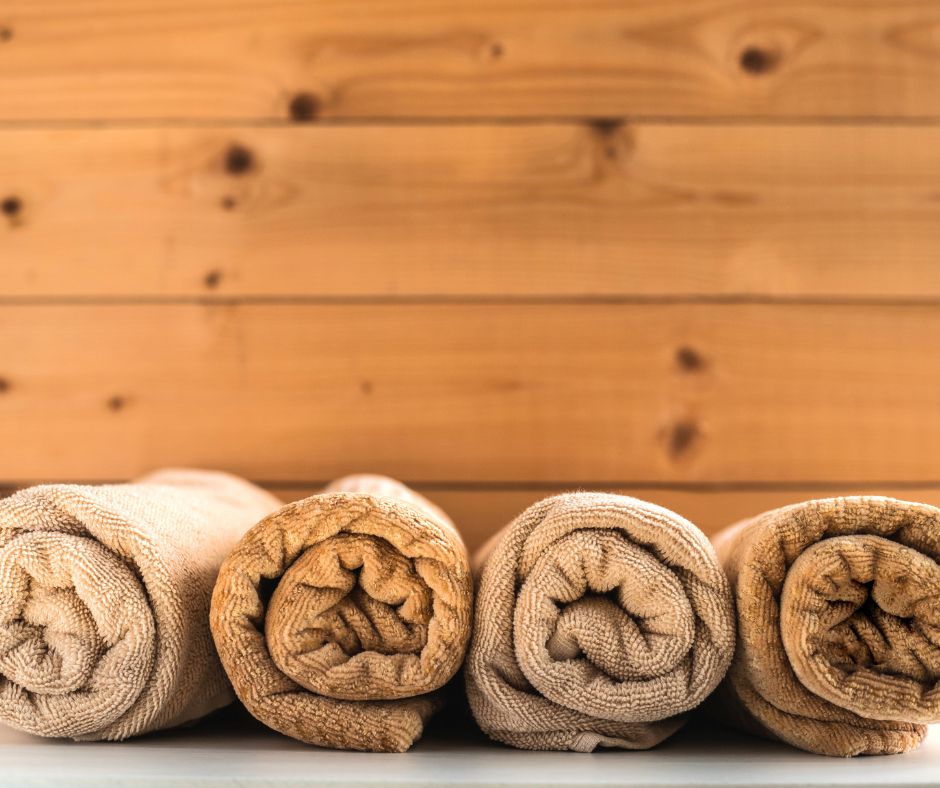“Heat the person, not the room.” What a patronising statement that is in 21st century UK.

Sure, the cost of living is biting. High energy bills are crucifying us all. The Bank of England seems hell bent on pushing interest rates until they squeeze even the most resilient mortgage payer.
None of this should matter when it comes to being warm in your own home, especially when you have young ones.
When my wife and I were first together, we lived in a bedsit. A single room with single pane windows and half-inch gaps in the frames. With a three-month-old daughter. In the winter of 1987, when we were snowed in for a fortnight.
Boy, that was cold. Almost as cold as my house when I was a kid. I might joke to my children that we used to sit around a candle to keep warm, and light it if it got really cold, but this really wasn’t far from the truth. Yes, we really did have ice on the inside of our bedroom windows in the morning.
Here’s a few of the room-warming tricks I’ve learned, and a few others that you could use to prevent the chill getting into your bones this coming winter – and of course I’ll be looking to address the question – what is the cheapest way to heat a room?
Quick Verdict
By following a few simple tips and tricks, you could save yourself hundreds of pounds each year and make sure you and your family are warm. You spend most of your time in a single room in the house, so heat the room and not the whole house.
Why Heat Only One Room?
You survived Covid. You thought it was all over. Then along came the Ukraine war and high inflation to kick us before we’d recovered. Energy bills shot through the roof. We’d like to heat our whole house, but it’s become time to take a leaf out of our parents’ and grandparents’ books – live most of your life in a single room.
Heating a single room can save a small fortune on electric and gas bills. It may take a little adjustment to how you live, but it is certainly doable. You’ll be toasty with these tips.
Let’s start with what my wife and I did in that Victorian bedsit with high ceilings and frost-bitten windows.
Gaffer Tape Is Your Friend
First things first, seal the gaps.
Get a feather or small strip of paper and hold it against the join between the windows and the frame. If it moves, you’ve got a draft coming through. Time to get the tape out.
Gaffer tape is best, but you could use carpet tape or even sellotape to seal where the draft is coming through.
Leave one window un-taped so that you can open it for ventilation when needed.
Towels Aren’t Only for the Bathroom

Towels make fantastic draft excluders for the bottom of the door. Roll them up into a cylinder and put a couple of elastic bands around them to keep them in shape. Mrs B calls them door sausages.
Place at the foot of the door, and gently press tight to the gap between the door and the floor.
You can also buy easy-to-fit insulating strips for doors. These stick to the bottom edge of your door and move where your door moves – ideal if you forget to replace your door sausage or leave the room for a few minutes.
(Bonus Tip: If you do leave the room, always close the door behind you. An open door leaves a huge hole for heat to escape quickly.)
Make Your Own Double Glazing
It’s not only the cold coming through the windows that is a problem. It’s the heat escaping. Double-glazed windows are a big help (though not infallible).
If you live in an older property with single-glazed windows, you could invest in an Easyfix sliding double glazing system – sheets of plastic that you fix with self-adhesive tacks. Works a treat for less than £20 for a 5ft x 3ft window.
Another way to insulate your windows is to use bubble wrap. Here’s how:
- Cut a sheet of bubble wrap to fit your window.
- Wipe the window with a damp cloth.
- Press the bubble wrap against the window until it sticks.
Job done! Though it should stay up without falling, you can easily peel off the bubble wrap when you need to.
Reflect the Heat Back Into the Room
Another area of loss of heat is the back of radiators. The heat they emit behind them soaks into the wall and out of your room. Again, this is easy to resolve.
Cut a piece of cardboard a couple of inches wider and higher than your radiator. Cover it in tin foil, and slide it behind the radiator, taping it to the wall so that the foil doesn’t touch the radiator. You can also buy reflecting foil that is made specifically for this purpose.
(Bonus Tip: A shelf above the radiator will help to keep warmth reflected into the room rather than rising immediately.)
Use Curtains
Curtains are great to retain heat in a room. The thicker the better. Best of all are thermal curtains, which are lined with a thermal insulator and cost only a few quid. They only take a few minutes to install, too.
(Bonus Tip: Keep your curtains open when the sun is shining on your window. This will help to heat your room up. Close them when the sun goes down at night to help keep captured heat in your room.)
Walk on Carpets and Rugs
We’ve focused on windows, doors, and walls, but you shouldn’t neglect what is under your feet. Wooden or concrete floors, and especially tiled floors, can be cold.
Carpets and rugs help to retain heat as well as give your feet a warm surface to walk on.
Heat Your Home Wisely with Central Heating
One of the biggest mistakes you can make is to heat the whole house when it is not needed.
Crank up the thermostat in the room in which you spend most of your time and reduce the heat in the rooms in which you spend least of your time.

If your radiators don’t have thermostat valves, invest in them. You should be able to fit them yourself, but if not then call a plumber.
If you are out most of the day, consider a smart thermostat. You can control this from your mobile phone. Turn the heat up for half an hour before you arrive home to make sure it’s warm for when you return without wasting energy and heat while your home is empty.
(Bonus Tip: Gas central heating is usually cheaper than electric central heating, so if you are considering installing central heating, first check out how much the running costs will be.)
Use Stand-Alone Heaters
Electric or oil-fired heaters can also heat a single room efficiently. Oil-fired heaters are ideal for larger rooms, but are less mobile than lighter electric heaters.
Whichever you use, don’t use them for prolonged periods (especially electric heaters, which can be expensive).
(Bonus Tip: You don’t need to pay a fortune for an electric heater. There is very little difference in the performance of a £30 heater and £200 heater.)
The Kitchen Heats Naturally
When you cook in the kitchen, it heats naturally. The heat from ovens and stoves does the trick that room heaters do.
If you have a combined kitchen/dining room, could this be the ideal room to use as your main living area?
Remember That Heat Rises and Insulate your Loft
Heat rises, and your roof is where a lot of heat escapes. According to the Energy Saving Trust, you could be losing as much as 25% of your heat through your roof.
The answer is to insulate your loft space. Lay rolls of insulating mineral wool between your joists, and then lay across your joists.
Switch Energy Suppliers
Do you think that switching energy suppliers is a hassle that takes more time and energy than it is worth? Then think again. It only takes a few minutes to compare the market and make the switch, and you could save hundreds of pounds on your energy bill each year by staying ahead of the game.
If this isn’t enough to convince you, then you could sign up to a service like Switchd, which automatically switches your supply to the cheapest option. The company says it switches suppliers for its customers at an average rate of once every six to nine months.
Heat Yourselves
Winter is the perfect excuse to cuddle up with the kids or your partner, or if you’re single to wrap yourself in a cosy blanket. I’m not a fan of onesies, but even these have a role to play in keeping you warm in the winter.
Here are four tips to heat yourselves as well as your room:
1. Wear socks, a jumper… and even a woolly hat!
An extra layer of clothes is important in the winter. Thick or thermal socks are amazing, even if your floor is carpeted.
And, as most of your heat is lost through your head, don’t be shy of wearing a hat or hoodie – or use the hood on that dreaded onesie!
2. Use a Hot Water Bottle
Make yourself a mug of hot chocolate or cup of tea. Fill the kettle and pour yourself a hot water bottle, too.
Use it to warm your feet, your back, or your stomach while you settle down to watch your favourite TV programme.
3. Indulge Yourself with a Heated Throw
One step up from a blanket wrapped around you is a heated throw. Like an electric blanket, they transfer their heat directly to you – which is far cheaper than heating an entire room.
4. Use an Electric Blanket on Your Bed
I like sleeping with a chill in the room. Probably because my bedroom was so darn cold when I was a kid. My wife likes it warm and cosy. Probably because her bedroom was so darn cold when she was a kid!
The compromise we’ve found is to use a dual-control electric blanket in bed. Her side is warm, my side is cold. For an investment of around £50, you can heat your bed for only a few pence per hour, and keep it thermostatically controlled throughout the night.
The Bottom Line
Don’t be cold this winter. If your energy bills are out of hand, hibernate to one room and keep that room warm. Keep out the drafts, use every trick you can to reduce your heating bills and increase your personal comfort.
Stop your room from losing heat, and, if possible, use thermostatically controlled gas central heating to keep your main living area at the temperature you prefer.
Wear a jumper and socks – it is winter, after all. Cuddle up with a blanket or family members, and use an oil-fired heater or electric heater sporadically if you don’t have central heating.
In years to come, you can tell your grandchildren that you sat around a candle to keep warm, lighting it if it got really cold!

